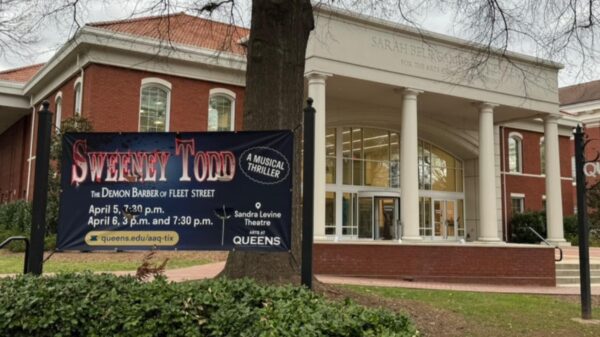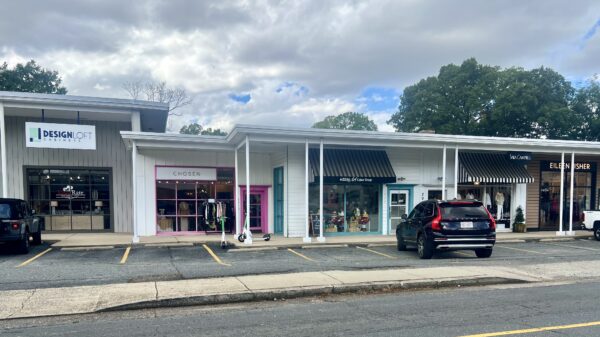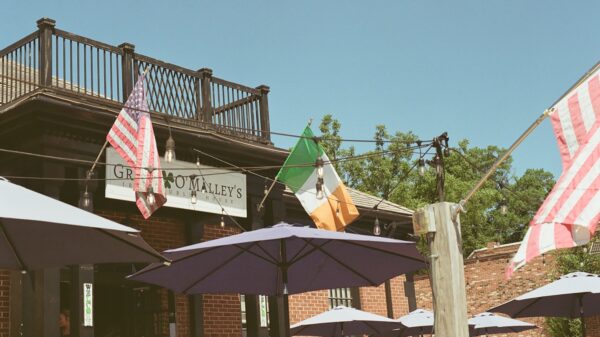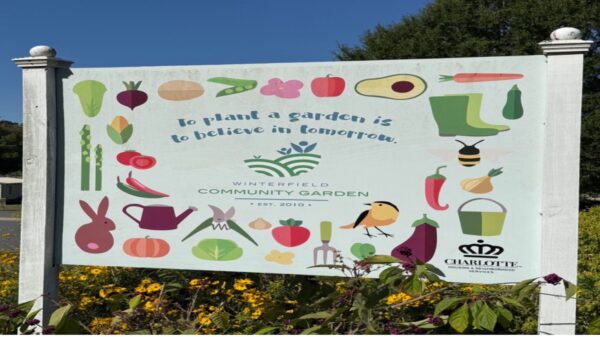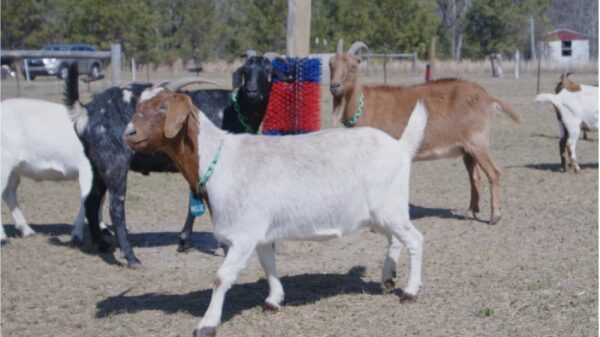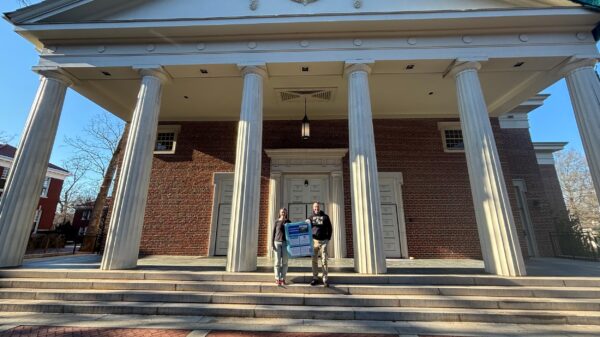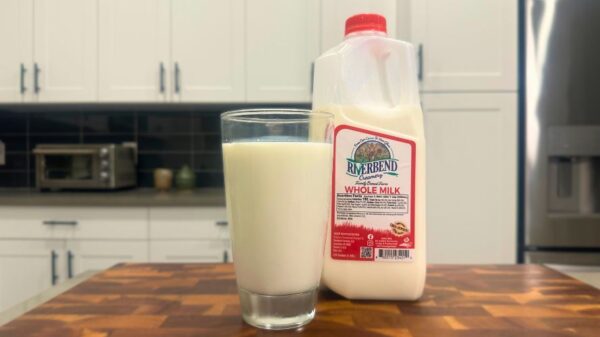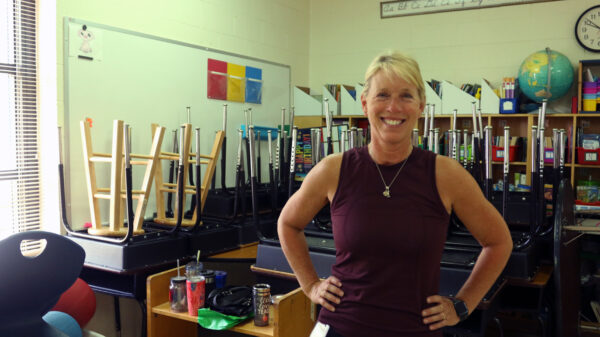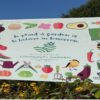Food deserts don’t occur naturally. Charlotte leaders focused on food insecurity say they’re a symptom of purposefully unequal policies, systems, and design. And they’re not even called “deserts” anymore.
What most people know is that food insecurity exists throughout Charlotte. The surprising news is that nonprofit organizations, farmers markets and local government are working together on innovative solutions to address the root cause.
Historic Inequalities
Loaves & Fishes/Friendship Trays is a community leader in food accessibility in Mecklenburg County. Danielle Moore, the organization’s chief of operations, says the term “food desert” misrepresents how and why neighborhoods lack access to fresh food. Other experts agree with her.
“We try to get to the etiology or the root cause of it,” Moore explained. “So what causes an area to have a lack of substantial food supply? Deserts are naturally occurring. They are ecosystems where animals and plants that are meant to be there do thrive. But food deserts, as people call them, are not naturally occurring. They are man-made, human-made by design. And so we call them food-insecure areas. Food insecurity and hunger is a symptom, right? It’s not the cause. It’s the effect. So we’re trying to address the cause.”
The root cause, she said, is often a combination of factors including high housing costs, lack of employment or fair pay, and transportation challenges. Unsurprisingly, these factors most directly affect the “poverty crescent” that figures so prominently in Charlotte’s economic, social, and political structure. The city has historically been divided into a high-income wedge in south Charlotte and a lower-income crescent in surrounding neighborhoods.
The Impact of COVID
COVID revealed that anyone can experience food insecurity, and many are just a paycheck away from hunger, Moore said. “Most of the people we serve look like you and me, they go to work every single day. They’re active members of the community, it’s just that they’re living paycheck to paycheck,” she said.
Six solutions from Loaves & Fishes/Friendship Trays, farmers markets, and Mecklenburg County Public Health are showing promise in addressing food inequality.
Farmers Markets and Nutrition

Photo by Marvette Monroe for Uptown Farmers Market
Data from the Centers for Disease Control indicate only 10% of people eat enough fruits and vegetables, and this percentage drops in lower-income populations. In recognition of this, the Uptown Farmers Market was created in the center of the city to fill the gap of fresh, healthy food. The market collaborated with First Baptist Charlotte to use its parking lot on Saturday mornings to provide a walkable hub for fresh produce and groceries, said Jan Johnson, the market’s president. In addition to supporting local farmers and artisans, the market offers affordable food and nutrition education. The market also provides live music and children’s activities to encourage the community to come together.
Food Pantry Network
Loaves & Fishes/Friendship Trays operates a network of permanent and pop-up pantries often housed at churches and community centers across Mecklenburg County. The pantries enable anyone with a referral to receive a week’s worth of free groceries from all five food groups – vegetables, fruits, proteins, dairy, and grains. Because the pantries are connected, clients can access food at any location, whether it’s close to work or home.
“If you’re truly limited with resources, then you’re limited with time,” Moore said. “And you don’t have the luxury to get off work early, or to leave during your lunch break, to go stand in long lines or fill out paperwork.” Moore compares the pantry system to healthcare insurance networks in that clients are accepted at all locations and their usage can be tracked to recognize needs and improve offerings.
Healthy Corner Stores
The North Carolina Department of Public Health implemented a statewide program in 2017 to simplify the stocking of fresh produce and healthy items by funding local corner stores, which are essential hubs in neighborhoods lacking supermarkets. In Mecklenburg County, nearly two dozen stores have received funding for refrigeration, stocking costs, and coupon programs. The initiative is increasing traffic into these corner stores, with coupons being redeemed regularly, said Mamie Harris, food security supervisor with the county.
Food Delivery
COVID revealed that many people facing hunger were falling through the gaps because they were unable to travel to food pantries, Moore said. In response, Loaves & Fishes/Friendship Trays increased their meal and grocery delivery programs. “The food is very, very important. But what’s also equally important, is the last mile,” Moore said. “If you don’t bring it directly to them, you’re still going to miss out on a ton of people.” Clients can choose their own items through an online grocery service.
SNAP & WIC Benefits
Normally, families with Supplemental Nutrition Assistance Program benefits receive a monthly allotment to spend on groceries. In Mecklenburg County, this amount is doubled up to $50 per week at about 15 farmers markets to encourage purchasing healthy foods. The initiative is a collaboration among several groups, including Blue Cross Blue Shield and county government. The Uptown Farmers Market received such a strong response to its Double Bucks program that the market is partnering with corporate sponsors to host Triple Bucks days, increasing the amount of food SNAP users can access. The county also offers a program where Medicaid users receive $40 monthly to purchase approved fruits and vegetables at Food Lion grocery stores. Eligible patients are sent an email or text message with a personalized form, and they receive money directly to their loyalty card each month.
Food Navigators
At Loaves & Fishes/Friendship Trays, a system of food navigators who have lived through food insecurity issues themselves help connect clients with the services and resources they need. “We know from research that people dealing with certain issues are more likely to be receptive and communicate with people who not only look like them, but also have similar experiences,” Moore said. “It’s so important that the people experiencing the issues have a voice in the solution.”
The Value of Collaboration
All three food insecurity leaders agreed that collaboration is key to addressing these systemic issues. Food insecurity is too big of a problem for one organization to solve alone, Moore said.
“The problem wasn’t created overnight. So we’re not going to fix it overnight. We need true, committed, long-standing collaboration. And I would love to see collaboration over duplication. If an organization is filling a niche, it’s perfectly fine,” Moore said. “But there is no reason why anyone should be doing the exact same thing another organization is already doing.”
-
Caroline Willingham is a 2023 graduate of the James L. Knight School of Communication at Queens University of Charlotte. Caroline served as managing editor of the Queens University News Service, as an intern with the Charlotte Journalism Collaborative, and was recognized for her reporting on community issues including emergency contraceptives on university campuses, affordable housing, and homelessness.
View all posts

